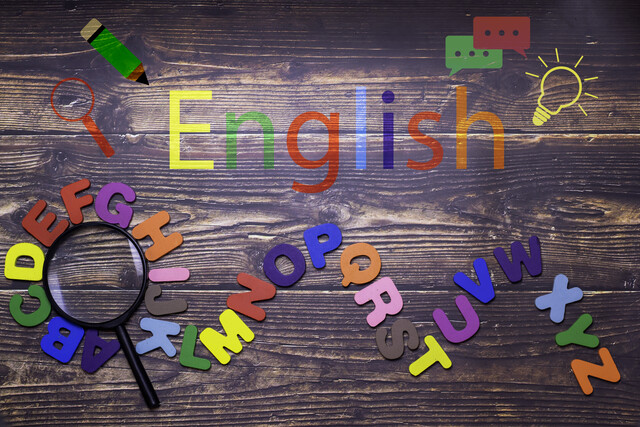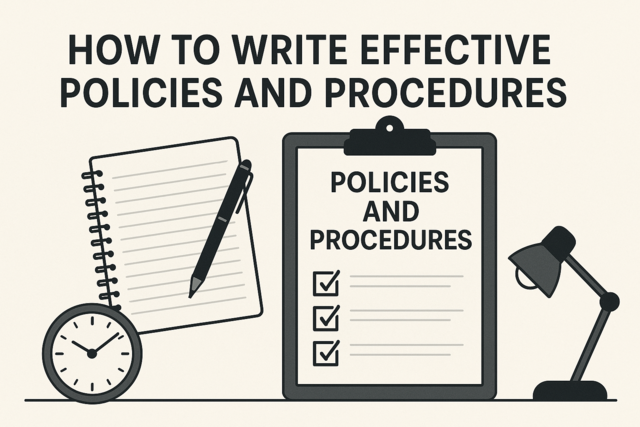Have you ever tried to learn a totally new concept? That's what it's like for some students when they are confronted with the first part of that sentence, "Have you ever tried." What's natural for a native speaker can, in the case of the present perfect tense, be maddening for a student.
The challenges of the present perfect
The good news is that with some explanation of and exposure to the idea, students will eventually get it. This is especially true for students who have already received some passive knowledge of the concept by hearing English spoken around them or to them (even if they didn't exactly understand.)
"Have you ever been to" and "I have already eaten" and the phrase "been there, done that" are sentence constructions that float around, and having heard them, most students have a least some idea that this form of grammar exists.
Still, getting across the idea that a single grammatical construction can reflect simultaneously the past and the present is the challenge you face as a teacher. Some students will be from a language background that has no equivalent to the present perfect, so it is a brand new concept for them.
Another challenge is that a classroom lesson on the present perfect might be students' first real exposure to the use of past participles. They might have learned about them when they learned the simple past, especially when they learned the irregular verbs and their forms like eat, ate, eaten. But this might be the first time they've really had to use past participles in action.
Some students accept it as a fait accompli and so just try to understand and use it. Other students want to thoroughly understand the concept and will require more instruction and explanation.
Another issue is that when students do learn it, they sometimes start overusing it and thereby using it incorrectly. They will say things like "I have been to Canada in 2015."
That's why it's important to stress that the present perfect is not used when talking about a specific time or occasion. Teaching when not to use the present perfect is part of teaching the present perfect. You will see more about this below in the techniques and lesson plan sections.
Some techniques for teaching the present perfect
One way I have come up to explain the Present Perfect is to describe it as the past and the present combined into one grammatical form, and it to demonstrate it in a somewhat mathematical form. I show them something like this:
I moved to London 12 years ago.
+
I still live in London now.
=
I have lived in London for 12 years.
Another thing that can help students grasp the concept is the use a timeline. Timelines can help students to visualize how to use tenses. In this case, the final timeline example looks something like this:
I moved to London 10 years ago. I live in London.
---PAST-------------------X--------------------------------------------------------NOW--------------------------------------- FUTURE ---
-I have lived in London for 10 yearsh
So let's go back. To present this diagram, start by writing the timeline by itself so the concept is clear:
---PAST-----------------------------------------------------------------------------NOW--------------------------------------- FUTURE ---
This helps the student to visualize the concept of past, present and future as presented in the diagram. You should put the "NOW" in the center.
So after writing the basic timeline, add the two sentences representing the past and the present, with an X to indicate a completed action in the past:
I moved to London 10 years ago. I live in London.
---PAST-------------------X--------------------------------------------------------NOW--------------------------------------- FUTURE ---
Point out and read the sentences, emphasizing the "I moved to London 10 years ago" is the past, and then say "I live in London now," pointing to "NOW" on the timeline.
Then add the present perfect sentence, and visually emphasize the time period in between.
I moved to London 10 years ago. I live in London.
---PAST-------------------X--------------------------------------------------------NOW--------------------------------------- FUTURE ---
-I have lived in London for 10 yearsh
At this point, read aloud first the past simple sentence ("I moved."), the present simple sentence ("I live.." and then, pointing to the whole of the time represented by the bold line, read aloud the present perfect sentence, emphasizing the "have lived," as in "I have lived in London for 10 years."
An example of a classroom lesson in the present perfect
The present perfect is a tense that will be introduced many times in different classroom lessons. In this example, it is a class about the words "ever" and "never" when used with the present perfect.
This is an intermediate level lesson, so the students would already know about past participles of verbs and about key vocabulary like to eat, to travel, to cook, a dinner, an airplane, a mountain and never. The target vocabulary for this class would be the words they might not know.
Presentation
To start this class, you would present the following vocabulary with the techniques we have learned in previous lessons (using photos, elicitation, repetition, etc.)
to hike
to repair
to paint
to cry
an octopus
Chinese
ever
"Ever" is the hard one here. You can present it as meaning "in your life." Like this on the board:
Have you (in your life) travelled to Canada?
Have you (ever) travelled to Canada?
Have you ever travelled to Canada?
After the vocabulary drill, it would be time to present the grammar.
Start out with the techniques described above, using the timelines, etc. This is a good introduction, because it explains step-by-step how the present perfect works in this situation.
When you finish using the timeline to introduce the concept, add more example sentences below it:
I moved to London 10 years ago. I live in London.
---PAST-------------------X--------------------------------------------------------NOW--------------------------------------- FUTURE ---
-I have lived in London for 10 yearsh
Have you ever lived in London?
No, I have never lived in London.
Have you ever traveled to America?
Yes, I have. I have traveled to America.
After the timeline, show the students this usage:
Present Perfect (I have lived / you have been / she has eaten )
-To express a situation or action that began in the past and continues into the present
Now show the forms of "to be" in the present perfect. Emphasize that the past participle, which the students will be familiar from previous classes on the past tenses and irregular verbs, is used with the present perfect. Emphasized here with the underlining:
TO BE: AM, WAS/WERE/BEEN
I have been I've been I haven't been = I've never been
You have been You've been You haven't been = You've never been
He/She/It has been He's / She's /It's been He/She It hasn't been = He/She/It has never been
We have been We've been We haven't been = We have never been
You have been You've been You haven't been = You have never been
They have been They've been They haven't been = They have never been
Have I been? Have I ever been?
Have you been? Have you ever been?
Has he/she it been? Has he/she it ever been?
Have we been? Have we ever been?
Have you been? Have you ever been?
Have they been? Have they ever been?
Reinforce the explanation showing the use of the past participle:
TO EAT: eat - ate - eaten
Have you ever eaten Chinese food?
No, I have never eaten Chinese food.
Yes, I have eaten Chinese food. I ate Chinese food yesterday!
Now point out the "ate" in the last sentence, and point out the "yesterday" while reading the sentence. Go back to the beginning of the line and read it, "Yes, I have eaten Chinese food," and adding verbally "in my life."
Then point to and read "yesterday" and continue with "I ate Chinese food." Say "simple past, because it's not in my life, it's specific, yesterday."
Have the students repeat aloud these lines using the repetition techniques.
Practice
You would introduce and model the practices using the techniques we have covered.
Practice 1
Fill in the blanks.
Example:
I've never ________________ to New York. (to be)
I've never been to New York. (to be)
1. Have you ever _______________ to Canada? (to be)
2. I _______________________ to Canada. (to be)
3. Has she ever _________________ sushi? (to try)
4. Have they ever ________________ to the museum? (to go)
5. They have never _______________ to Canada.
6. He's ____________________ all over the world. (to travel)
7. I've never ________________ to New York. (to fly)
8. We've ____________________ Mexico many times. (to visit)
Practice 2
Write the sentence again, changing "never" to "not" or "not" to "never."
Example:
I haven't been to New York. > I have never been to New York.
I have never been to New York > I haven't been to New York.
1. I haven't travelled to Canada.
2. She has never eaten sushi.
3. They have never gone surfing.
4. You haven't seen this movie before.
Practice 2
For this practice, provide the following to your students before reading the text:
Listen and write YES or NO to the following questions:
Has Marcos ever travelled to Boston?
Does Marcos know John?
Has Diana ever eaten sushi?
Has John ever eaten at the Japanese restaurant?
Then read the text (twice).
Diana: Marcos, have you ever been to Boston before?
Marcos: Yes, I have been here twice before.
Diana: Have you met my colleague John?
Marcos: No, I haven't. Nice to meet you, John.
Diana: John is the new manager. He's been our manager for three weeks.
Marcos: I'm ready for lunch. Have you tried the Japanese restaurant next door?
Diana: No, I've never tried it. I've never eaten sushi in my life.
John: I've been to that restaurant. It's good.
Practice 3
Have the students write complete sentences for the answers in practice 2. For example:
Has Marcos ever travelled to Boston?
Yes, Marcos has been to Boston twice.
(etc.)
Practice 4
Put the students in pairs, give the students the text from the dialogue and have them read it aloud with each other.
Production
This exercise is fun and gets the paired-up students to use the grammar while talking about their lives.
You would present this exercise by showing the example and having the whole class answer. Point out the second part of the affirmative answer, "I went surfing last year," and again point out that when talking about specific time, the past simple is used.
Reinforce this by calling on a good student and asking something that will probably result in a "yes" answer, like "Have you ever eaten Mexican food?" Follow it up by "When was the last time?" to get a past simple answer ("I ate Mexican food last week.")
Production
Ask and answer the questions with your partner.
Example:
go skiing
- Have you ever gone surfing?
- Yes, I have. I went surfing last year in California.
OR
- No, I have never gone surfing./No I haven't.
1. go surfing
2. cry during a movie
3. play tennis
4. cook a big dinner
5. fly in an airplane
6. travel to Paris
7. play basketball
8. hike in the mountains
9. eat octopus
10. repair a car
11. paint a room
12. meet a film star
13. see a Chinese film
14. drink a whole bottle of wine
15. see a horror movie
16. repair a car
17. take a long plane trip
18. take a long vacation
19. play football
20. be drunk
It's a good exercise that should last for a nice long Production phase. If not, you could encourage the students to make up their own questions, or make new pairs and have them start again with new partners.
Song ideas
You could design a whole lesson around the following songs. I have used all these songs to teach the present perfect. You will learn in detail how to use songs in the classroom in Lesson 20.
-Bryan Adams: "Have You Ever Really Loved A Woman?"
-Carpenters: "A Song For You"
-U2: "Still Haven't Found What I'm Looking For"
-James Taylor: "Fire And Rain"




















